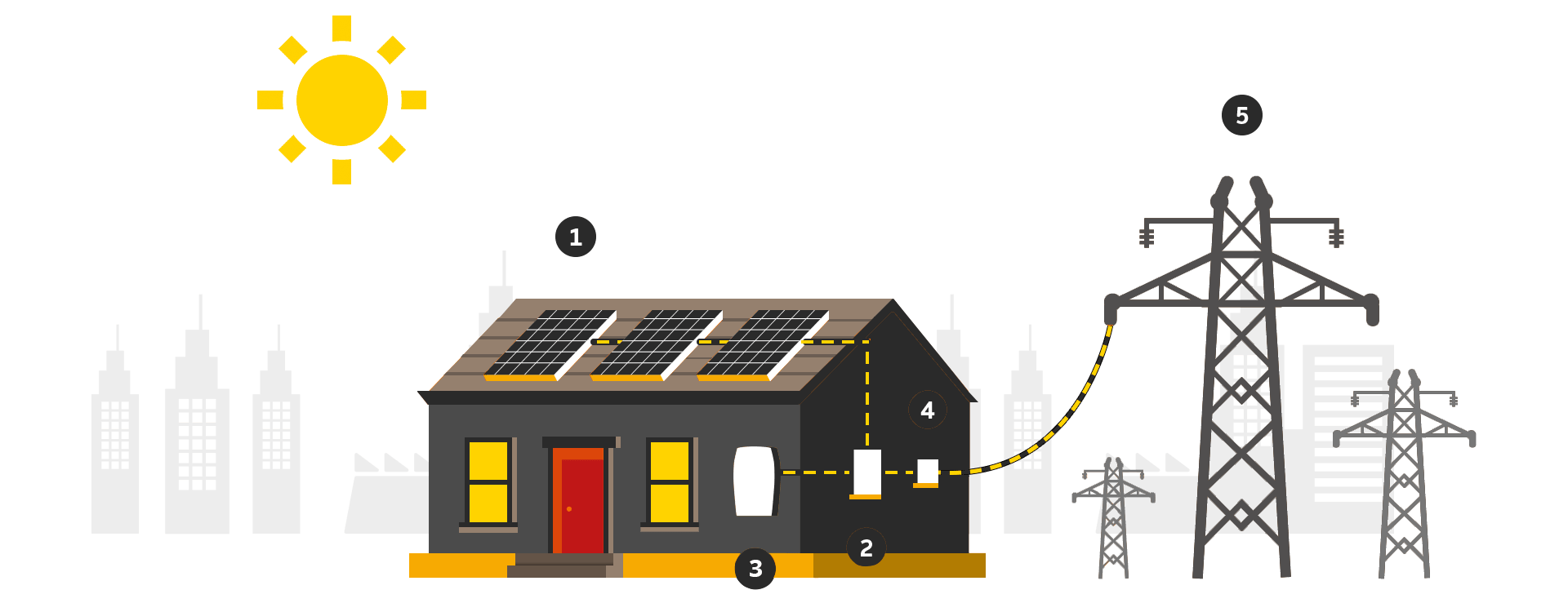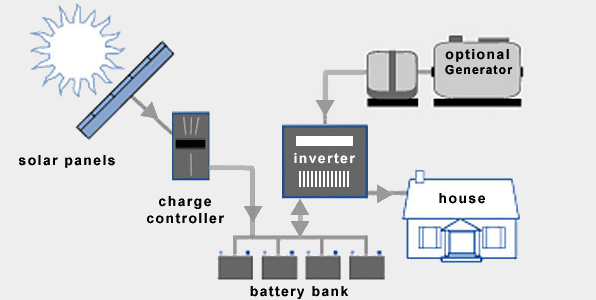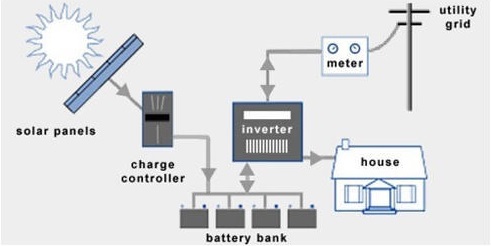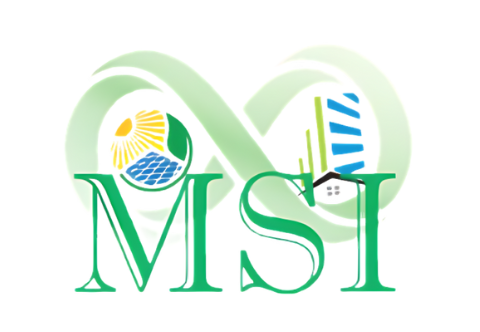Want to understand Renewable Energy? Curious to know Solar History? Want to learn more about how solar components and how it works? Read through our below information and get SOLARIZED yourself today!!
Know Solar
Renewable Solar Energy
Renewable energy is energy produced from natural sources that do not deplete or can be replenished. This energy is also known as ‘green energy’ and ‘clean energy’. There are different types of renewable energy like wind energy, solar energy, biomass energy, geothermal energy, tidal energy and wave energy.
Solar energy is the most abundant, renewable energy source in the world. Solar energy systems refer to technologies that convert the sun’s heat or light to another form of energy for use. There are two categories of technologies that harness solar energy Solar Photovoltaics and Solar Thermal.
Solar Photovoltaic is a technology that converts sunlight into DC (Direct Current) electricity. Solar Thermal is a technology that utilizes the heat energy from the sun for heatingand/or the production of electricity.


Solar Energy History
Solar energy is actually nothing new. People have used solar power as far back in history as the 7th century B.C. The earliest uses of solar power included focusing the sun’s energy through a magnifying glass to start fires for cooking. Sunrooms were invented in ancient times to capture solar energy for its natural warmth.
In 1839, French physicist Edmond Becquerel discovered the photovoltaic effect.Later in 1873, Willoughby Smith discovered that selenium could function as a photoconductor. In 1876 William Grylls Adams and Richard Evans Day discovered that selenium could generate electricity when exposed to light. In 1883, American inventor Charles Fritz created the first working selenium solar cell, a major precursor to the Silicon solar cell technology we used today.
In 1905,Albert Einstein published a paper on the photoelectric effect and how light carries energy generating more attention and acceptance for solar power. In 1954, three scientists from Bell Labs, Daryl Chapin, Calvin Fuller, and Gerald Pearson, created a more practical solar cell using silicon.
As the space age developed, solar panels were used to power various parts of spacecraft throughout the late 1950s and 1960s. The first was the Vanguard I satellite in 1958, followed by Vanguard II, Explorer III, and Sputnik-3.In 1964, NASA launched the Nimbus satellite, which ran entirely on its 470-watt photovoltaic solar panel array.
How Solar Works

- Solar-powered Photovoltaic PV Panels convert the sun’s rays into electricity by exciting electrons in silicon cells using the photons of light from the sun. Electrons are negatively charged and gets attracted to one side of the silicon cell. This creates an electric DC current.
- The DC current generated by Photovoltaic cell is converted to AC current using special electric equipment which is called Inverter.
- The AC current generated by Inverter is then used by property/households and an excess current is fed to Gird.
- There is smart bi-directional meter called Net Meter which keeps the track of incoming and outgoing electrical power. This Net Metering allows users to get concessions on electricity bills as the amount for units fed to the grid will be deducted from the number of units actually consumed by the owner and the billing will only be done for that part of the units.
- Grid is termed as utility power from DESCOM. All generated energy that consumed via a provider is supplied through the grid. As shown in picture, the Grid plays an important role in designing solar system and your savings.
Solar Components
Solar Panels
The solar panels also known as PV Panel/Module generate DC (direct current) electricity from sunlight. Solar panels are made up with a bunch solar cells that convert sunlight into electricity. Solar cells are made from an element called “silicon. Solar panels are installed on shadow free area of the rooftop or ground usually facing south for maximum output.
Solar panels are invented in many types and capacities. These panel varies from each other based on their formation; material used. There are 2 types of Solar Panel: –
Monocrystalline Solar Panels
Monocrystalline solar panels are often the most expensive due to the manufacturing process, which uses large amounts of highly purified silicon and a great deal of energy. Monocrystalline solar cells are about 19-20% efficient at converting sunlight to electricity.
Polycrystalline Solar Panels
To manufacture polycrystalline solar panels, low purity silicon is used. Polycrystalline cell efficiencies range between 14-16% so polycrystalline are slightly less expensive than monocrystalline ones on a price-per-Watt basis.
Inverter
A Solar Inverter is electrical equipment which converts the DC (direct current) electricity produced by the solar panels into AC (alternating current) electricity which is then used by the appliances or machines. Inverters play an important role in the solar energy system and are the brains of the project.Solar Inverter is the most important component of the solar system as it ensures that the maximum output of the solar panels is generated in all conditions.
There are 5 Types Of Solar Inverters:
Types of Solar System
Grid Connected Systems or On-Grid Systems

Off-Grid Solar Systems

Hybrid System

Where Solar can be installed
Residential Solar
Independent House
Farmhouse
Residential Societies
Industrial Solar
Small Scale Industries
Medium Scale Industries
Large Scale Industries
Commercial Solar
Shopping Malls/Complexes
Business Centers
Petrol Pumps
Toll Plaza
Hoardings
Corporate Offices
Independent Shops
Sports Complexes/Stadiums
Hospitals
Hotels – Banquet Halls
Restaurants and Resorts
Institutional
Schools, Colleges, Universities
Municipal Corporations
Police Stations
Railway Stations
Bus Stands
Metro Stations
Airports
Government Buildings
Agriculture Institutes
Gas Plants (PNG/LPG)
Armed Force Institutes/Offices
